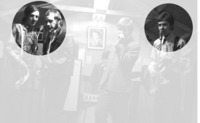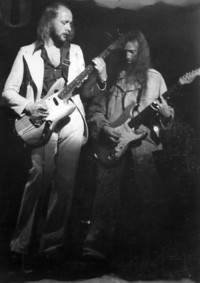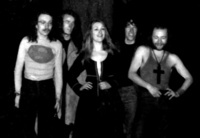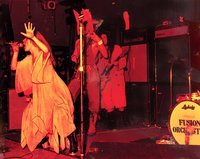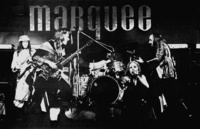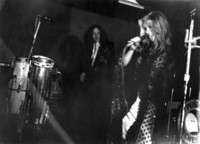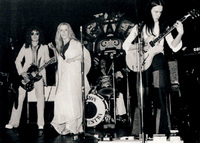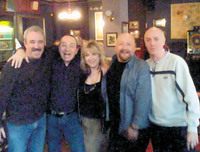Beginnings
Fusion Orchestra was formed in 1969 by guitarists and lifelong friends Colin Dawson and Stan Land (who met on their very first day at infants school), together with Dave Bell, who had already been playing drums with Colin and Stan in a rock band which, at the time, was unnamed.
The name Fusion Orchestra was eventually chosen to reflect the diverse styles woven into the band's music. Early performances featured original songs written by Stan Land and Colin Dawson.
In the band's early days, vocal and bass duties were handled by another friend of Colin and Stan – Dave Wheeler, but other interests prevented him from joining the band on a permanent basis.
Although the band played eight gigs with Dave Wheeler on bass, his situation meant the other members were constantly on the lookout for a replacement, which they found in November 1969 in the shape of Mick Sluman. Mick was singing and playing guitar with a local semi-pro band called This Was (a name unashamedly lifted from the title of Jethro Tull's debut album). The band was playing a support spot to Fusion Orchestra.
Mick had a certain stage presence and Colin, Dave and Stan approached him after the gig to find out when and where his band rehearsed. A while later they turned up at a This Was rehearsal and, much to the disquiet of the other members, asked Mick if he wanted to join a good band – he'd have to take up bass guitar though. Mick thought about it for about 30 seconds. He joined and soon began to contribute to the band's material, helping to pen some early band numbers with Colin Dawson and Stan Land, including 'Winter Nights' and 'Outcast in Hell'.
The band built up a strong following gigging around London and the South and, in June 1970, they were spotted by their manager-to-be Steve Parker while playing an open-air gig at Carshalton Carnival in South London. Fusion Orchestra had been booked as third on the bill but their performance stole the show and blew the other bands off stage.
